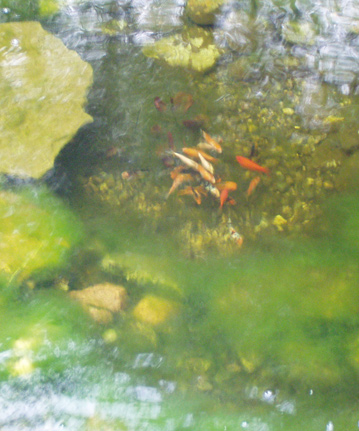Bacteria 102 Chapter 2

As we learned in Bacteria 101, the most important group of bacteria in an aquatic environment are the ‘Nitrifying’ bacteria. These bacteria transform an otherwise toxic and potentially deadly compound, Ammonia, into a basically benign, very critical plant nutrient, Nitrate. Two chemical oxidation processes occur whose results on one hand purify the water and on the other hand nourish aquatic plants.
Bacteria are quite plentiful in any water, fresh or saline. There are typically ~ a million bacterial cells in a milliliter of fresh water (>50,000 in a single drop) and these are only the free floating species.
Nitrifying bacteria colonize every available immersed or constantly wet surface in an aquatic environment. This includes the submerged portions of aquatic plants, the insides of plumbing components including pumps, even the surfaces of other organisms such as snails and insect larvae. In essence, any aquatic environment, taken as a whole, IS a bio-filter. The addition of supplemental surface area for colonization is normally a requirement in aquatic environments that are to support a fish population. (More on this subject can be found in the College of Filtration).
This blanket surface colonization is also is exhibited by some heterotrophic bacteria species, whereas others are free floating. Nitrifying bacteria, like all other aquatic organisms, are influenced by temperature, pH and Oxygen levels. The temperature for optimum growth of nitrifying bacteria is between 77-86° F (25-30° C). The optimum pH range for Nitrifying bacteria is between 7.3-8.0. The optimum Oxygen level for Nitrifying bacteria is 80% of saturation. Heterotrophic bacteria, because of the superior number of species, are adaptable to a much wider range of temperature and pH. Oxygen requirements, however, are similar.
A reasonably balanced aquatic environment will sustain optimum bacterial population levels, nitrifying and heterotrophic. Under certain circumstances, however, it may be deemed necessary to add supplemental bacteria to an aquatic environment. These supplemental bacteria are available under many labels in either a liquid or a powder. It is important to keep in mind that, because nitrifying bacteria do not produce spore, they are available only in liquid form.

As we learned in Bacteria 101, the most important group of bacteria in an aquatic environment are the ‘Nitrifying’ bacteria. These bacteria transform an otherwise toxic and potentially deadly compound, Ammonia, into a basically benign, very critical plant nutrient, Nitrate. Two chemical oxidation processes occur whose results on one hand purify the water and on the other hand nourish aquatic plants.
Bacteria are quite plentiful in any water, fresh or saline. There are typically ~ a million bacterial cells in a milliliter of fresh water (>50,000 in a single drop) and these are only the free floating species.
Nitrifying bacteria colonize every available immersed or constantly wet surface in an aquatic environment. This includes the submerged portions of aquatic plants, the insides of plumbing components including pumps, even the surfaces of other organisms such as snails and insect larvae. In essence, any aquatic environment, taken as a whole, IS a bio-filter. The addition of supplemental surface area for colonization is normally a requirement in aquatic environments that are to support a fish population. (More on this subject can be found in the College of Filtration).
This blanket surface colonization is also is exhibited by some heterotrophic bacteria species, whereas others are free floating. Nitrifying bacteria, like all other aquatic organisms, are influenced by temperature, pH and Oxygen levels. The temperature for optimum growth of nitrifying bacteria is between 77-86° F (25-30° C). The optimum pH range for Nitrifying bacteria is between 7.3-8.0. The optimum Oxygen level for Nitrifying bacteria is 80% of saturation. Heterotrophic bacteria, because of the superior number of species, are adaptable to a much wider range of temperature and pH. Oxygen requirements, however, are similar.
A reasonably balanced aquatic environment will sustain optimum bacterial population levels, nitrifying and heterotrophic. Under certain circumstances, however, it may be deemed necessary to add supplemental bacteria to an aquatic environment. These supplemental bacteria are available under many labels in either a liquid or a powder. It is important to keep in mind that, because nitrifying bacteria do not produce spore, they are available only in liquid form.



